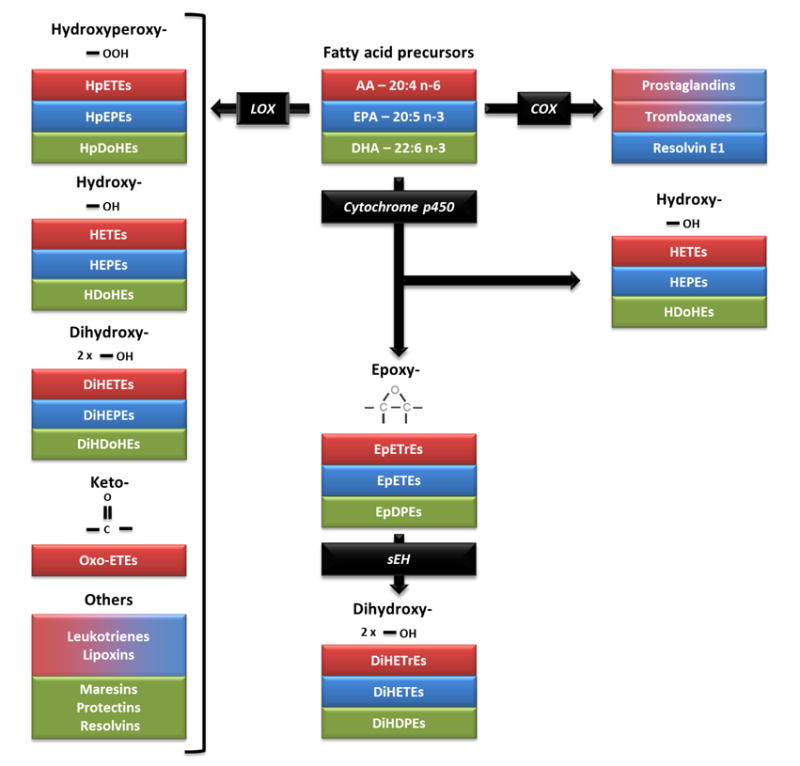Figure 2. Enzymatic synthesis of oxylipins from arachidonic acid (AA; 20:4 n-6), eicosapentaenoic acid (EPA; 20:5 n-3) and docosahexaenoic acid (DHA; 22:6 n-3).

Polyunsaturated fatty acids, including AA, EPA and DHA, are precursors to oxidized fatty acid metabolites, commonly known as oxylipins. In this figure, fatty acid precursors and their respective metabolites share the same color code. Prostaglandins, thromboxanes and resolvins are produced from AA and EPA though the cyclooxygenase pathway (COX) pathway. The lipoxygenase (LOX) pathway produces hydroperoxy-metabolites, such as hydroperoxyeicosatetraenoic acids (HpETEs), hydroperoxyeicosapentaenoic acids (HpEPEs) and hydroperoxydocosahexaenoic acids (HpDoHEs), that are rapidly converted into hydroxy-metabolites, including hydroxyeicosatetraenoic acids (HETEs), hydroxyeicosapentaenoic acids (HEPEs) or hydroxydocosahexaenoic acids (HDoHEs). Hydroxy-metabolites from the LOX pathway can then be converted into dihydroxy metabolites, such as dihydroxyeicosatetraenoic acids (DiHETEs), dihydroxyeicosapentaenoic acids (DiHEPEs) or dihydroxydocosahexaenoic acids (DiHDoHEs), and into keto-metabolites, such as oxo-eicosatetraenoic acids (oxo-ETEs). Leukotrienes and lipoxins from AA and EPA, as well as maresins, protectins and resolvins from DHA are also synthesized through the LOX pathway. Cytochrome p450 enzymes are oxidative enzymes that generate hydroxy-metabolites on activated or terminal carbons or epoxides at olefinic bonds. Epoxides generated by Cytochromie p450s include epoxyeicosatrienoic acids (EpETrEs), epoxyeicosatetraenoic acids (EpETEs) and epoxydocosapentaenoic acids (EpDPEs). These largely anti-inflammatory epoxy-metabolites can be converted largely by soluble epoxide hydrolase (sEH) into their respective diols, dihydroxyeicosatrienoic acids (DiHETrEs), dihydroxyeicostetraenoic acids (DiHETEs) and dihydroxydocosapentaenoic acids (DiHDPES).
